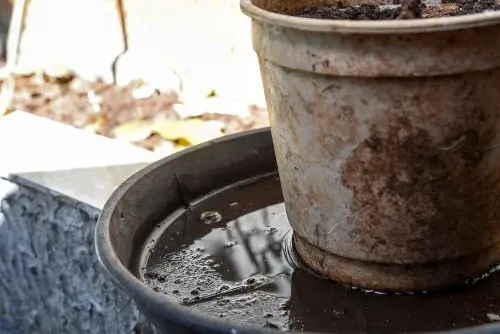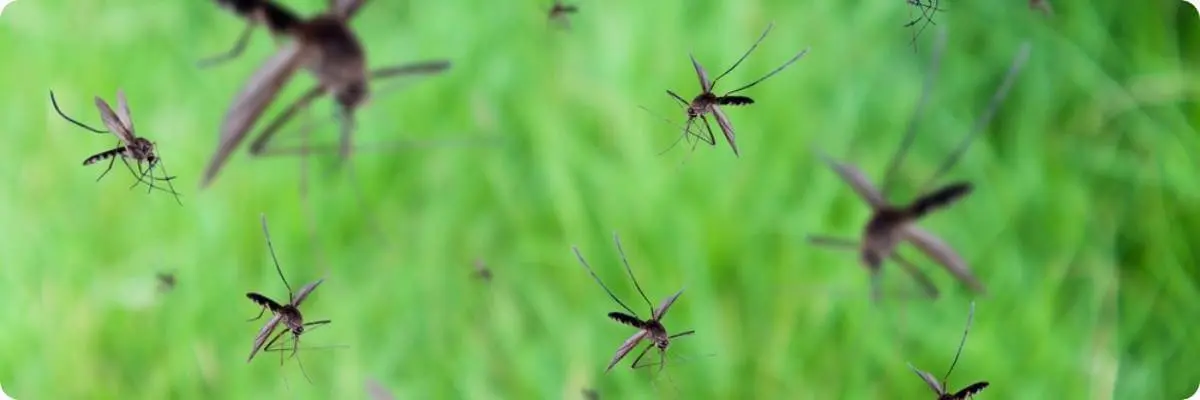My journey into understanding how weather impacts mosquito activity begins with acknowledging the intricate relationship between these pests and their environment.
Different species of mosquitoes thrive in various habitats, yet they all share one thing in common: weather conditions significantly influence their life cycles and behaviors.
Temperature serves as a key factor in mosquito development. When it’s warm, mosquitoes can breed and mature at an astonishingly fast rate. Conversely, cold temperatures slow down or completely halt their growth processes.
I’ll look at the optimal temperature range for most mosquitoes and explain why some areas experience mosquito problems year-round.
Besides temperature, both humidity and rainfall have roles in mosquito breeding.
Mosquitoes lay their eggs in stagnant water, so heavy rains can create ideal breeding sites, while high humidity improves survivability.
I’ll discuss how these two factors combine to provide mosquitoes with a perfect habitat to multiply.
Then there’s the wind. Surprisingly, it does more than just deliver a refreshing breeze; windy conditions can disable a mosquito’s ability to seek out its next meal.
Remember these key interactions between weather and mosquito activity.
In the next section, ‘Hot and Humid: Prime Conditions for Mosquitoes,’ I will look into the direct consequences of these warm, moist environments on mosquito populations and, more importantly, what you can ACTUALLY DO to protect yourself and your community from these times of peak activity.
Hot and Humid: Prime Conditions for Mosquitoes
Mosquitoes thrive in warm environments. When the thermometer climbs, these pesky insects become more active, their metabolism speeds up, and they start to search for food – which, unfortunately, means blood.
It’s not only blood but also plant nectar and juices. Mosquitoes also play a small role as pollinators.
It’s no coincidence that mosquito activity spikes during the summer months. This is their time to shine, or more accurately, to bite.
What is it about high humidity that makes these insects so happy? Moisture is the answer. Mosquito larvae require water to develop, and humid conditions prevent the evaporation of stagnant water sources – perfect breeding grounds for mosquito offspring. Add in regular summer rainfall, and you’ve got an ideal nursery for the next generation of biters.
With hot and humid conditions comes an increased risk of mosquito-borne diseases. These include dangerous illnesses like Zika, West Nile virus, and dengue fever.
Warmer weather allows for faster reproduction of mosquitoes, consequently raising the potential for disease transmission in affected areas.
The ideal temperature for mosquitoes is around 80°F (27°C); when the temperature descends to 60°F (15°C), they become less active, and below 50°F (10°C), they stop functioning and go into a state known as diapause. In extreme heat, mosquitoes are less active.
In regions where the temperatures don’t descend below 50°F, such as in tropical climates, mosquitoes can be active all year round.
Here’s the good news: there are actions you can take that will help you to control these unwelcome summer guests.
Controlling Mosquitoes
Remove Standing Water

The first and most obvious advice is to eliminate any standing water around your home. Although this is the starting point for eliminating mosquitoes, I am surprised that people don’t pay more attention to this.
Please be diligent in removing any standing water around your home and yard. Even better, try to educate neighbors and others in your locality. You will all reap the benefits!
Repellents
Use mosquito repellents. These can be applied to your exposed skin and are very effective.
If you don’t fancy covering your skin with repellents, there are several effective spatial repellents. These might be battery-operated devices or budget-priced mosquito coils. While both systems work, if there is any wind, the repellent will be diffused around your garden and won’t protect you.
Natural Predators, Larvicides
Consider introducing or encouraging natural predators like bats or dragonflies to your garden. If you have a garden pond, fish will take delight in eating the mosquito larvae.
For any area of water you can’t cover or add fish to, you could consider a larvicide. There are larvicides available that don’t impact other wildlife.
Traps
Mosquito traps can be effective, but the most successful traps often use carbon dioxide, which means the running costs can be high. Other traps work by using attractants and fans that suck in the mosquitos. These traps can eliminate a large number of mosquitoes over a season.
There are also traps designed to capture the female mosquito (ovitraps) before she can lay her eggs. These traps don’t require power, lures, or CO2, which means they are very economical and can be placed anywhere. You can even make your own!
And remember, all these measures are important not only for comfort but also for health, especially in peak mosquito seasons.
Wind and Mosquito Movement
The good news is, if it’s windy, mosquitoes may not be able to find you. Firstly, a stiff breeze may stop the mosquito from flying, and secondly, if it does manage to fly, the carbon dioxide you exhale and the odors your skin emits will be diffused in the breeze. Meaning the mosquito cannot find you.
On the other hand, a slight breeze of less than a few miles an hour may help a mosquito find you. The carbon dioxide and other odors will be carried downwind towards the mosquito.
In certain species, the adults are adapted to flight in windy conditions. This enables them to cover great distances and to colonize new areas.
You can use the mosquitoes’ dislike of wind to your advantage by using a fan to create a breeze to keep the mosquitoes away from you. This method can be used both indoors and outside.
Cold Weather and Mosquito Dormancy: What Happens in Winter?
As the chill of winter sets in, you might notice that the buzz and bite of mosquitoes decline. This reprieve is thanks to the cold temperatures, which play a vital role in reducing mosquito activity.
Mosquitoes, cold-blooded creatures, cannot regulate their body temperature, making them vulnerable to the environment. When temperatures hover around 50 degrees Fahrenheit, many female mosquitoes enter a phase known as diapause, a type of hibernation. Adult males aren’t able to enter the diapause state and die off as the cooler weather arrives.
This dormant state allows mosquitoes to survive until warmer weather returns. During diapause, adult females often seek shelter in hollow logs, houses, and other locations that offer protection from the cold.
Meanwhile, a few species have larvae that can overwinter buried in the mud of frozen water bodies, waiting to emerge as adults once the ice melts. Other species lay eggs in the fall; these eggs can overwinter and hatch in the spring.
Freezing temperatures can also be lethal to mosquito populations, particularly when they’re sudden and extended. Some species may not survive the winter, which can lead to a decrease in mosquito numbers in the following spring. However, many species are resilient and can bounce back once favorable conditions resume.
The reduced risk of mosquito-borne disease transmission in colder months should not lead to complacency. It’s essential to maintain control measures, like eliminating standing water where mosquitoes can breed, to prevent a surge in population when the weather warms up.
As you might expect, with the onset of spring, mosquitoes re-emerge and resume their life cycle. The warmth activates eggs that overwintered, and with the right conditions, larvae hatch and mature, and the air soon fills again with these persistent pests.
Adapting to Climate Change: Mosquito Activity in a Shifting Environment
The conversation about mosquitoes does not end with the immediate relief that winter brings. I’ve learned we must pay attention to the larger picture: climate change and human activities.
The shifts in global weather patterns are having a profound impact on mosquito behavior, distribution, and the diseases they can carry.
I’ve noted, in multiple studies, that warmer and wetter conditions are creating new breeding grounds for mosquitoes. They’re expanding their reach, showing up in areas previously too cold for them to survive. This unwelcome change means we are seeing a rise in mosquito-borne diseases like malaria, West Nile fever, and dengue fever in places unaccustomed to them.
Adapting to these changes requires innovative thinking and proactive measures. It’s essential for local and global health authorities to closely monitor the situation, leveraging advances in technology and data analysis to track and predict mosquito activity patterns.
The way we live also plays a big part in mosquito activity. Producing plastic waste, which is everywhere and often gives ideal breeding sites. Studies have shown that mosquitoes thrive in urban environments, and mosquito-borne diseases are also more prevalent.
But it’s not just a task for the experts. Community-level actions, such as reducing standing water and increasing public awareness, are crucial. By working together and incorporating eco-friendly control methods, we can minimize the impact of mosquitoes on our health.
In a world where the only constant is change, understanding and managing the connection between weather, human activity, and mosquito activity is more important than ever. We need more research to be prepared and community-driven solutions that ensure public health and safety in the face of a changing climate.

